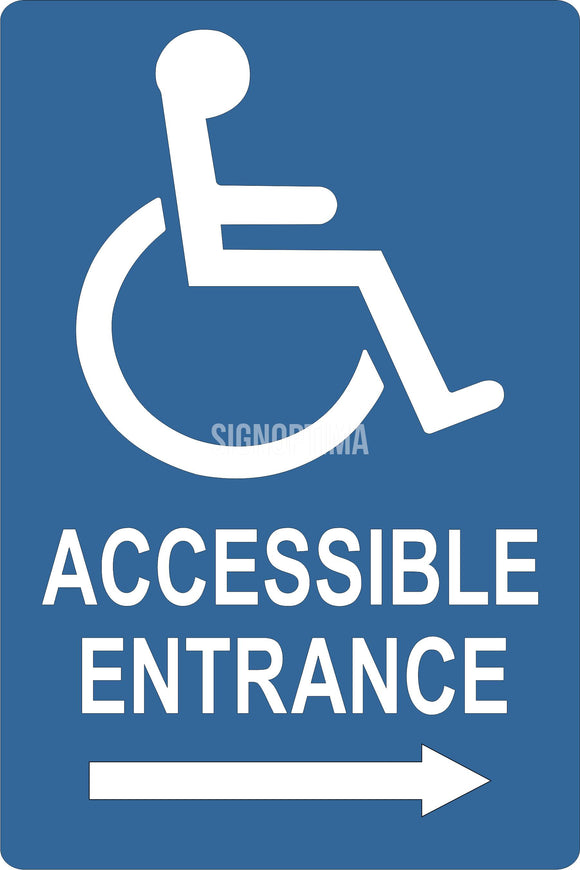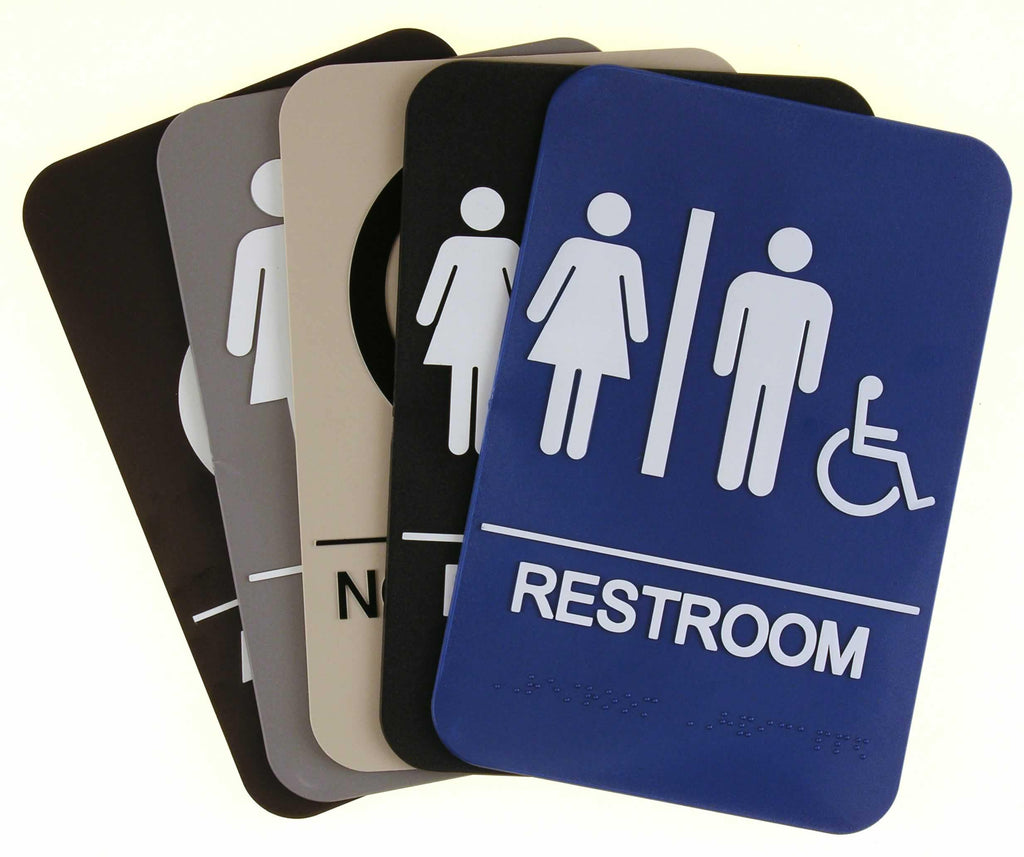The Advantages of Using Top Notch ADA Signs in Your Business
The Advantages of Using Top Notch ADA Signs in Your Business
Blog Article
Discovering the Trick Functions of ADA Indications for Enhanced Accessibility
In the realm of access, ADA indications serve as silent yet effective allies, making certain that spaces are comprehensive and accessible for people with impairments. By incorporating Braille and tactile components, these indicators break barriers for the aesthetically damaged, while high-contrast color plans and legible font styles provide to varied visual requirements.
Significance of ADA Compliance
Ensuring compliance with the Americans with Disabilities Act (ADA) is critical for fostering inclusivity and equivalent accessibility in public spaces and offices. The ADA, enacted in 1990, mandates that all public facilities, companies, and transportation services accommodate people with disabilities, ensuring they delight in the very same civil liberties and opportunities as others. Conformity with ADA standards not only meets legal commitments but also improves an organization's online reputation by showing its dedication to diversity and inclusivity.
Among the vital aspects of ADA compliance is the application of accessible signage. ADA indications are created to guarantee that people with handicaps can easily navigate with structures and areas. These indicators should abide by details guidelines pertaining to size, typeface, color contrast, and placement to assure visibility and readability for all. Properly applied ADA signs aids remove obstacles that individuals with handicaps frequently experience, thus advertising their self-reliance and confidence (ADA Signs).
In addition, sticking to ADA policies can reduce the risk of potential fines and legal effects. Organizations that fall short to conform with ADA standards might encounter claims or penalties, which can be both financially difficult and harmful to their public photo. Therefore, ADA conformity is important to cultivating an equitable setting for every person.
Braille and Tactile Aspects
The unification of Braille and tactile components right into ADA signage embodies the concepts of availability and inclusivity. These functions are crucial for individuals that are blind or visually damaged, allowing them to browse public areas with better freedom and confidence. Braille, a tactile writing system, is necessary in supplying composed info in a format that can be quickly perceived through touch. It is normally positioned beneath the corresponding message on signage to make certain that people can access the information without aesthetic aid.
Responsive aspects prolong past Braille and consist of raised symbols and personalities. These parts are made to be discernible by touch, enabling individuals to identify space numbers, restrooms, leaves, and other vital areas. The ADA establishes specific guidelines relating to the size, spacing, and positioning of these tactile aspects to enhance readability and make certain consistency throughout various atmospheres.

High-Contrast Color Pattern
High-contrast color pattern play a critical role in boosting the visibility and readability of ADA signs for individuals with visual impairments. These schemes are necessary as they take full advantage of the distinction in light reflectance in between text and history, ensuring that indications are conveniently noticeable, even from a distance. The Americans with Disabilities Act (ADA) mandates making use of particular shade contrasts to fit those with limited vision, making it an important aspect of conformity.
The efficacy of high-contrast shades depends on their ability to stand out in numerous lights conditions, including dimly lit environments and areas with glow. Normally, dark text on a light history or light message on a dark background is employed to achieve optimal comparison. Black text on a white or yellow background offers a raw aesthetic difference that aids in fast recognition and comprehension.

Legible Fonts and Text Size
When taking into consideration the design of ADA signage, you can check here the choice of understandable font styles and appropriate text size can not be overstated. These components are essential for guaranteeing that indications come to people with aesthetic problems. The Americans with Disabilities Act (ADA) mandates that fonts need to be not italic and sans-serif, oblique, script, highly ornamental, or of unusual type. These needs help ensure that the message is easily readable from a distance which the personalities are distinguishable to varied audiences.
The size of the text also plays a crucial duty in access. According to ADA guidelines, the minimal text elevation should be 5/8 inch, and it ought to boost proportionally with viewing distance. This is specifically important in public rooms where signage demands to be checked out promptly and accurately. Consistency in message dimension adds to a cohesive aesthetic experience, aiding individuals in browsing environments successfully.
Furthermore, spacing between letters and lines is essential to clarity. Ample spacing avoids personalities from appearing crowded, improving readability. By adhering to these standards, developers can dramatically enhance availability, guaranteeing that signs offers its desired purpose for all people, no matter their aesthetic capabilities.
Effective Positioning Methods
Strategic placement of ADA signs is essential for optimizing accessibility and making sure conformity with legal standards. ADA standards state that indicators need to be placed at an elevation between 48 to 60 inches from the ground to guarantee they are within the line of view for both standing and seated individuals.
Furthermore, indications have to be positioned nearby to the latch side of doors to enable simple identification before entry. This placement aids people locate spaces and areas without obstruction. In cases where there is no door, indications ought to be situated on the nearest surrounding wall. Consistency in indication positioning throughout a facility improves predictability, reducing complication and enhancing overall individual experience.

Final Thought
ADA indicators play a vital duty in advertising accessibility by integrating features that resolve the requirements of people with impairments. These components jointly foster a comprehensive setting, emphasizing the relevance of ADA conformity in making certain equivalent access for all.
In the realm of access, ADA signs serve as quiet yet effective allies, making certain that spaces are comprehensive and navigable for people with specials needs. The discover here ADA, established in 1990, mandates that all public facilities, employers, and transportation services accommodate people with disabilities, guaranteeing they take pleasure in the same legal rights and possibilities as others. ADA Signs. ADA signs are designed to guarantee that people with disabilities can easily browse via buildings look here and spaces. ADA guidelines stipulate that indicators must be mounted at a height in between 48 to 60 inches from the ground to ensure they are within the line of view for both standing and seated individuals.ADA signs play an essential role in promoting accessibility by incorporating functions that attend to the demands of people with impairments
Report this page